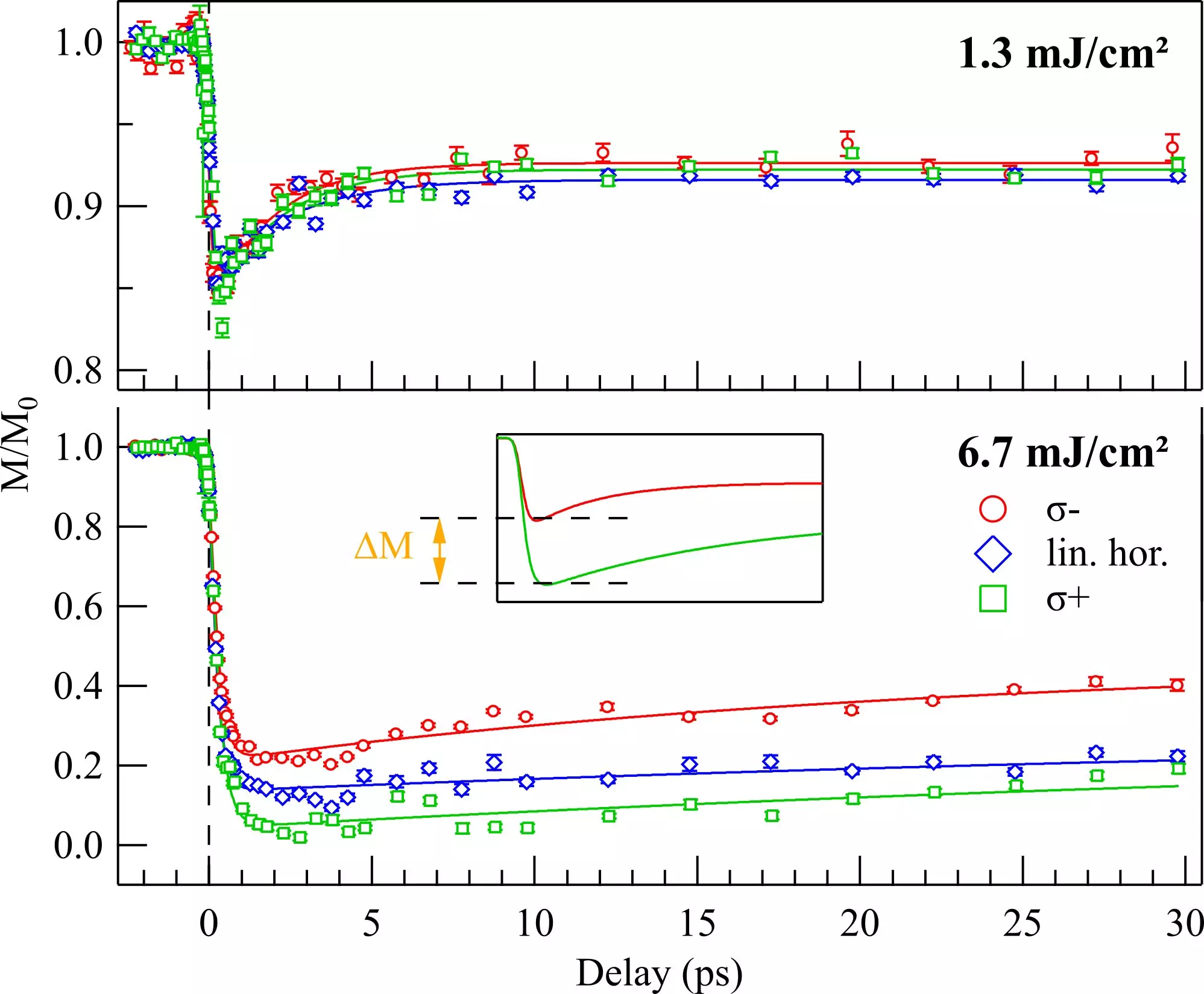In recent research conducted by the Max Born Institute (MBI) and an international team of scientists, a groundbreaking non-thermal approach to manipulating magnetization has been discovered. This innovative method utilizes intense laser pulses of extreme ultraviolet (XUV) radiation to induce large magnetization changes in a ferrimagnetic iron-gadolinium alloy. The study, published in Communications Physics, demonstrates the effectiveness of this technique in generating strong magnetic responses without the need for thermal heating.
Unlike traditional methods that rely on thermal effects induced by absorbed light energy, this new approach is based on the inverse Faraday effect (IFE). The IFE enables a direct and coherent interaction between the polarization of the XUV radiation and the electronic spins in the material, leading to the generation of magnetic moments without causing excessive heat load on the alloy. By utilizing circularly polarized femtosecond pulses of XUV radiation, the researchers were able to induce a significant IFE-induced magnetization in the iron-gadolinium alloy.
To overcome the limitations posed by the absorptive properties of ferro- and antiferromagnetic materials, the researchers developed a specialized technique using high-energy XUV radiation. By resonantly exciting core-level electrons with strong spin-orbit coupling, the scientists were able to achieve large opto-magnetic effects in the alloy. The results indicated that the magnetization induced by the IFE could reach up to 20-30% of the ground-state magnetization of the material, showcasing the potential of this non-thermal method for rapid magnetization control.
Supporting their experimental findings, the researchers employed ab initio theory and spin dynamics simulations to verify the validity of the observed effects. The results confirmed that the non-thermal magnetization generated by the IFE mechanism aligns with theoretical expectations and cannot be explained solely by thermal helicity-dependent processes like X-ray magnetic circular dichroism (XMCD). This validation underscores the significance of the study’s contributions to the fields of ultrafast magnetism, spintronics, and coherent magnetization control.
The implications of this research extend beyond the realm of fundamental science, offering practical applications in data storage technologies and nonlinear X-ray matter interactions. By enabling the non-thermal manipulation of magnetization on ultrafast time scales, this novel approach paves the way for advances in controlling magnetic properties with light. The potential for revolutionizing magnetization control through non-thermal light manipulation holds promise for the development of next-generation technologies and devices that rely on magnetic functionalities.
The study by MBI and its collaborators represents a significant milestone in the field of magnetization control. By harnessing the power of intense XUV radiation and the inverse Faraday effect, the researchers have demonstrated a non-thermal pathway to generating large magnetization changes in a ferrimagnetic alloy. The innovative approach offers a novel perspective on manipulating magnetism with light, opening up new possibilities for ultrafast magnetism studies and practical applications in spintronics and beyond.


Leave a Reply